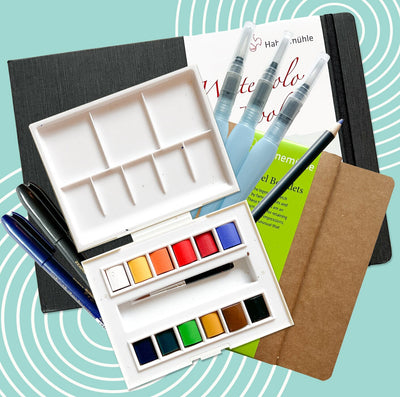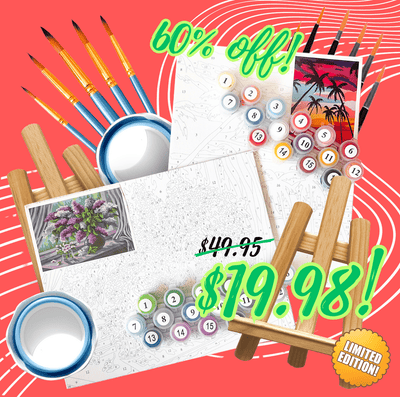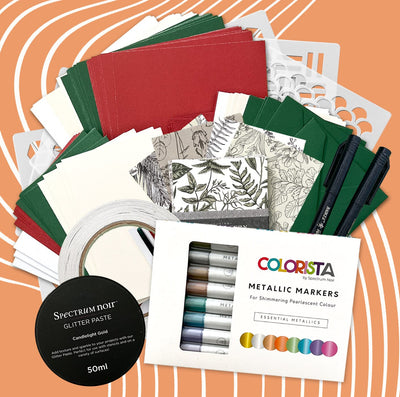If you're interested in drawing with line and shade in graphite and charcoal like a professional artist, the best thing you can do for yourself is make sure that you have the right tools. Sketching every day and frequent practice will develop your fine arts skills, but good tools will help you achieve good results alleviate some of your frustrations. You wouldn't try to paint a watercolor landscape with a toothbrush, would you? Trying to draw with an improperly sharpened pencil could be setting you up for the same struggle—hard edges and difficulty blending.
You can buy professional pencils, but that doesn't mean you're already drawing like a professional. Professional artists don't settle for pre-sharpened pencils straight out of the box. These will give your drawings too many hard edges, or you may find that you're making marks that are too dark, too soon. For the best graphite pencil layering and blending, try sharpening your pencil by hand.
Sharpening Graphite Pencils for Shading Effects
To give your pencils the most textural versatility, you want to be able to shade and tone with the side of the graphite while drawing lines with the point. This means cutting the wood away from the graphite so that the exposed graphite is elongated.
You'll need:
A pencil of whatever kind—including graphite, charcoal, colored, and oil pencils
A conventional pencil sharpener
A razor blade or utility knife
A sandpaper block, or a sheet of fine grain sandpaper (80-120 grit recommended)
- For easy cleanup, put a piece of scrap paper beneath your workspace to catch the shavings and debris.
- If your pencil is not sharpened yet, use the conventional pencil sharpener to start the process, this gives you a point to work with already. Already having a separation between the wood and graphite will make for easier sharpening.
- Hold the pencil with your non-dominant hand, and place the razor blade or utility knife on top of the pencil. Use your dominant hand hold the razor blade and guide it through long motions as you shave off pieces of the wood. Long, slow motions will keep you from gouging the graphite. Nicks in the exposed graphite could weaken the pencil and cause it to break during use. Shave off thin layers at a time, rotating the pencil constantly so that all sides are even.
Always give yourself the most control possible over the razor. While you are holding and rotating the pencil with your non-dominant hand, you can also use the thumb of this hand to help guide the razor blade.
- For charcoal pencils, the ideal length of the exposed charcoal is around half an inch. You would then want the whittled down the shaft to measure about three-quarters of an inch long. Keeping your pencil's shaft long and thin means that your pencil can make better acute angled marks on the paper.
With a graphite pencil, you can safely allow the exposed graphite to be a little longer, reaching about three-quarters of an inch. If you have a longer exposed graphite, you will also need a longer whittled down wooden shaft, so that the graphite's side can easily touch the paper along its whole length.
- Using the fine grain sandpaper, smooth the exposed graphite down into a shape that looks the head of a round paintbrush. Do this by rubbing the graphite back and forth at an almost horizontal angle. As you do this, rotate the pencil, so that all sides are equally smooth. You want to make a long cone with convex sides. This shape will allow you to give long strokes without hard edges on both sides of the mark.
If you don't have any sandpaper handy, you can also do this last step with your razor blade. Very carefully and without much pressure, move the razor blade on the exposed graphite. Rotate it constantly, making sure to shape it into a convex cone with a point at the end.
- After drawing a bit, your pencil will wear down. When your pencil begins making hard lines again, use your sandpaper to reshape it. Each time you shape the pencil, attempt to achieve that same convex cone that you had in the first place. Continue to sharpen in the same way, drawing back the wood away from the graphite and shaping the exposed graphite.
Remember that pencils sharpened this way will be more fragile than you might be used to. Take care not to allow them to fall from your workspace. You can use a ridged pen holder, or even a plate to keep them from rolling away from you. When learning to sharpen your pencils this way, you will most likely break a few until you get more familiar with the technique. Don't worry, it's part of learning and everyone does it!
Using the Graphite Pencil

Using the tip of the pencil, you will be able to make strong lines like you are used to. Using the side, you will be able to make smooth soft tones for shading and defining. Try moving from toning with the sides into firm lines. Practice making different depths of shade and tone with your pencil. Remember to rotate the pencil between strokes as you work with it, so it remains round. If you draw using only one side of the pencil, you will find that one side will be more worn than the others, and will, therefore, start producing those dreaded hard lines.
Start with trying to draw simple 3D shapes. Keep your pencil at an acute angle and use the side of the graphite to produce tones. Use your pencil at something between a 45-60 degree angle to make lines.
Remember that this kind of sharpening eliminates hard lines in your drawing instrument, so your lines and shading may appear soft at first, but you can layer these in order to deepen the darkness and strength of the shade. Drawing with a graphite or charcoal pencil means that your background paper is the color of things that are lighted, whereas the pencils shading represents things that are in shadow. Build your shadows gradually, layering with the side of your pencil and blending easily.
As you practice drawing with these new pencils, you will probably find them much easier to layer, build, shade, and blend than pencils sharpened with a traditional sharpener. You will be able to get softer, more diffuse tones. Nor is this technique limited to graphite pencils. Try sharpening your colored pencils this way for easier layering and color sketching!



